What do sociologists do? Rather than working with one person at a time to determine the state of his or her mental health, sociologists have a more daunting task: Figuring out the behaviors of people when they act in concert with others.
This profession takes a microscopic look at what happens to individuals when they are influenced by other people, cultures, organizations, and institutions, according to the U.S. Bureau of Statistic’s Occupational Outlook Handbook.
Using both quantitative and qualitative research tools plus investigative methods not unlike those employed by other social science professions, sociologists use classic and contemporary theories to understand individual and group behavioral patterns.
Can movies help sociologists understand more about group behavior? The answer is yes.
Some films are so intuitive, they have the power to change the way society acts, behaves, and responds to diverse social issues. These 10 movies are particularly important because they help moviegoers better understand the dynamics of why people behave as they do when they’re no longer acting alone.
Movies for Sociology Students
#1: An Inconvenient Truth (2006)
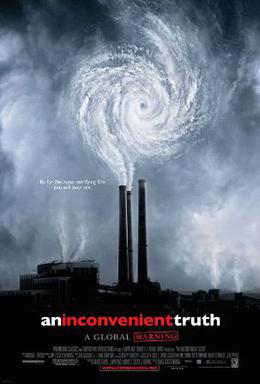
Former U.S. Vice President Al Gore won a 2007 Nobel Peace Prize for this documentary and there is no denying the daunting message: Society must become more aware of the international impact of global warming before it’s too late. This cinematic early warning earned critical praise and continues to do so.
Pairing film footage showing a declining environment with statistics on weather pattern changes, Gore’s concerns about climate change and his haunting final message serve as a warning of what mankind must do to safeguard the future of our planet. It’s been 36 years and Gore’s warnings appear to have been ignored, say environmental sociologists.
Duration: 1h 36 min
Rating: PG
#2: Bambi (1942)
Considered an animated pioneer of environmental awareness films, Walt Disney’s Bambi is more than juvenile entertainment. It’s also an early lesson in wildlife and habitat conservation issues, yet impacted society profoundly during an era when hunting was considered a mainstream sport. A drop in deer hunting was reported after the movie hit theaters:
While hunting remains popular with some segments of society, this film would be widely castigated today as inhumane by some — but for film scholars there’s a hidden story. The film was adapted from a 1928 book written by Felix Salten (pen name). Sociologists labeled the film an allegory about the fate of European Jews and the debate continues.
Duration: 1h 10 min
Rating: PG
#3: Bowling for Columbine (2002)
Director Michael Moore’s third film is a tragedy-filled documentary that explores the thorny issue of the rise of gun violence in schools. Moore’s directorial masterpiece covers serious ground as it tells the tale of students Eric Harris and Dylan Klebold who shot 15 people during the 1999 Columbine High School massacre that rocked the state of Colorado – and the U.S. — to its core.
Debuting to rave reviews, the social significance of this premier film showed first-hand what two disturbed teens were willing to do out of anger and hatred against society. Since its debut, gun violence in schools has not abated. Bowling for Columbine won an Academy Award for Best Documentary Feature. The film’s official trailer captures its essence:
Duration: 1h 59 min
Rating: R for some violent images and language
#4: Brokeback Mountain (2005)
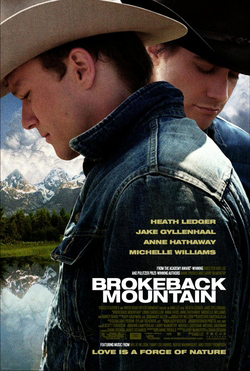
Not everyone was comfortable sitting in theaters the year Brokeback Mountain opened around the nation. Starring Jack Gyllenhaal and Heath Ledger, this tale of two married cowboys takes place between 1963 and 1983 when same-sex relationships were not as out in the open as they are today.
Discovering that they are sexually attracted to each other and acting on those feelings proved so raw and compelling a cinematic experience, the film earned multiple Golden Globe Awards. Brokeback Mountain polarized moviegoers, some of whom took issue with the love scenes. At the heart of this film is the inner conflict with which each man struggles in a society where most gay relationships remained in metaphorical closets.
Duration: 2h 14 min
Rating: R for sexuality; nudity; language; some violence
#5: Blackfish (2013)
Taking the kids to aquatic theme parks throughout the nation raised few eyebrows until a killer whale named Tilikum was captured in 1983 and brought to Sea World as part of the theme park’s ongoing entertainment offerings. This cavalier attitude changed with the distribution of Gabriella Cowperthwaite’s documentary showcasing how stressful life in captivity was when these mammals were confined to cages.
Like Bambi, the film Blackfish impacted society in several ways – both economically for Sea World and emotionally for moviegoers who left theaters feeling guilty, angry and in some cases, committed to seeing an end to this cruelty. Blackfish was awarded a 2014 BRITDOC Impact Award for bringing about positive change. See why this film received so much acclaim:
Duration: 1h 23 min
Rating: PG-13
#6: Philadelphia (1993)
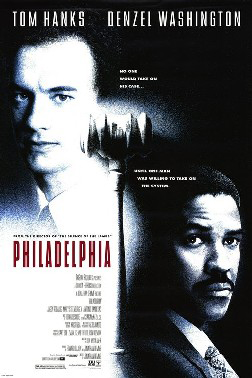
This movie is so sociologically important, even the Smithsonian Institute published a retrospective on this film 25 years later to see how far attitudes have changed. The plot line describes the firing of lawyer Andrew Becket (Tom Hanks) after his firm learns he has AIDS.
Despite his discomfort around gay people, attorney Denzel Washington signs on as Tom Hanks’ attorney to bring suit against Becket’s law firm. Artfully directed by Jonathan Demme, the haunting soundtrack (https://www.youtube.com/watch?v=tKdk97y2Wjg) is especially powerful. Roger Ebert called the movie “the first time Hollywood has risked a big-budget film on the subject,” bringing both AIDS and gay rights into the sunlight.
Duration: 2h 5 min
Rating: PG-13
#7: Selma (2014)

No movie list recommending works for sociology students would be complete without Selma, a tribute to the legendary Selma to Montgomery (Alabama) voting protest march of 1965, when the world looked on in horror as dogs, police and bigots confronted Dr. Martin Luther King Jr. and other protestors as they demonstrated against segregation.
Would the Civil Rights Movement have gained traction were this movie never produced? Yes, but the depiction of the bravery residents and Black leaders exhibited at this pivotal moment and in this specific place shows the depths to which changemakers were willing to risk their lives for their beliefs.
Duration: 2h 2 min
Rating: PG-13
#8: Super Size Me (2004)
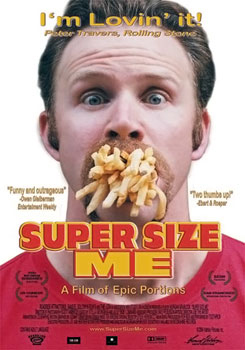
The nation’s appetite for fast food has impacted American society but it wasn’t until Morgan Spurlock’s documentary revealed the truth about the impact on one’s health from consuming an unhealthy diet that the public took notice. Spurlock committed to a “McDonald’s-only diet” as filmgoers watched his health and physical appearance disintegrate dramatically.
How profound did this documentary prove to be? Researchers say that feedback and further research following the film’s release were responsible for corporate McDonald’s decision to remove the option of getting food orders “super-sized,” and 18 years later, this option has not returned to the chain’s menu of options.
Duration: 1h 38 min
Rating: PG-13
#9: The Birth of a Nation (1915)

Movies of sociological importance are not limited to the current century. This silent film broke movie theater attendance records when it depicted the assassination of Abraham Lincoln around the time of the Civil War and at a time in history when the Ku Klux Klan wielded immense power over communities in the south.
What’s unique about this film? It does not depict the Klan as being a hate organization committed to lynching Black people. Rather, it’s promoted as an organization conceived to protect American values. For students wresting with competing political messages today, this movie is a true eye-opener, even by today’s standards
Duration: 3h 10 min
Rating: NR
#10: The Thin Blue Line (1988)
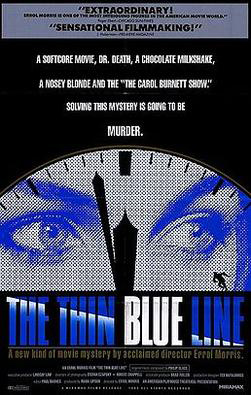
When Dallas police officer Robert Wood was murdered in 1976, he had been about the business of stopping a man who was driving a car that was suspected of being stolen. The driver drew a gun after he was stopped and killed Wood. The purpose of this riveting film was to explore whether the driver was guilty.
The Thin Blue Line chronicles flaws in the justice system that bring into question the need for a death penalty. Legal maneuvering led to the driver’s ultimate release from prison. Given today’s policing temperature, this 35-year-old movie shows that society continues to wrestle with some of the same issues today.
Duration: 1h 49 min
Rating: NR
Resources used
https://www.bls.gov/ooh/life-physical-and-social-science/sociologists.htm#tab-2
https://www.imdb.com/title/tt0497116/plotsummary?ref_=tt_stry_pl
https://www.criterion.com/current/posts/5751-bowling-for-columbine-by-any-means-necessary
https://www.focusfeatures.com/brokeback_mountain
https://www.smithsonianmag.com/arts-culture/looking-back-philadelphia-25-years-later-180971011/
https://www.rogerebert.com/reviews/philadelphia-1994
https://www.commonsensemedia.org/movie-reviews/selma
https://study.com/academy/lesson/super-size-me-movie-facts-summary.html
https://www.plantbased.com/super-size-me-summary-documentary-film/
https://www.history.com/this-day-in-history/birth-of-a-nation-opens
https://www.criterion.com/films/28355-the-thin-blue-line
